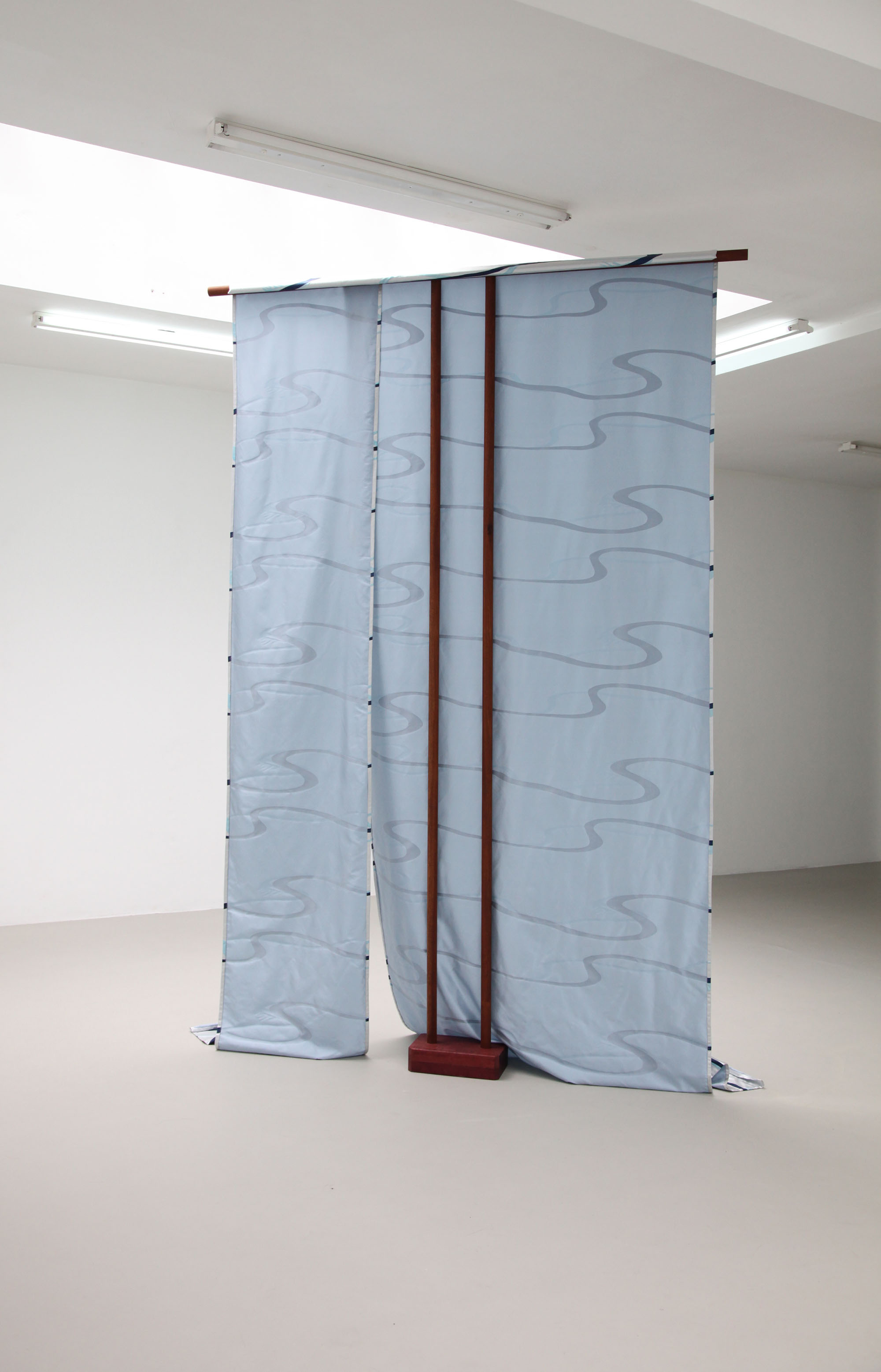MAKI UMEHARA
NEWS | WORKS | PUBLICATIONS | CV | CONTACT
 |
隠された欲望
a. 川のライン
b. 風景/Landscape We Mediate
c. カラーバティック
d. 隠された欲望
2012年, (1-4) 188 x 40 x H. 270 cm, 188 x 15 x H. 210 cm, 178 x 15 x H. 230 cm, 50 x H. 50 cm
Meranti, cotton fabric (Batik, The Netherlands), silk fabric, silkscreen printing
Installation view, 1 川の線; 2 (調停の媒体となる)風景, the Juliette Jongma Gallery, アムステルダム
Text:Dr. Stefan Weppelmann (ライプチヒ造形美術館館長 / Museum der bildenden Künste Leipzig),「至上の幸福」
展覧会カタログ Calm Heaven on Earth, ドイツ語, 英語
The Galerie Sherin Najjar, ベルリン
In 1835, the Dutch introduced Batik from Asia to Europe… sixty years later, speech and thought bubbles were first used in an American comic strip (Yellow Kid, 1896)… 1931 saw the invention of the Tristimulus colour space…
Calm Heaven on Earth
In 1835, the Dutch introduced Batik from Asia to Europe… sixty years later, speech and thought bubbles were first used in an American comic strip (Yellow Kid, 1896)… 1931 saw the invention of the Tristimulus colour space…
MAKI UMEHARA effects the coexistence of tradition and patterns in various time slots and geographical contexts. Using textiles as her “canvas,” she makes use of a medium with tradition in Japan, where textiles are regarded as an important media of contemporary art. With her recourse to the Kicho on the other hand, a portable curtain used by aristocratic Japanese women in the 19th century to maintain their private sphere, the artist turns to the past. In her work “Coloured Batik,” Umehara uses a material produced in Holland printed on one side with silver paint. An industrial material is thus given a unique status. The colours, brilliant on one side, lay pale on the other, as if though under wax. Although showing two clearly separate sides, the viewer remains unclear as to front and back. A minimal gesture, it assumes the status of a picture within a picture. The Dutch imported wax Batik from Asia, thus pioneering a new technique in colouration and textile design. The material which they produced was then exported to the African colonies, where line and colour was given their own symbolic relevance. “Coloured Batik” displays such an “African” repeating pattern, produced today in industrial processes. Mass production and hand work thus each shape a side of the same material. Umehara allows a complex process of geographical migration involving forms, techniques and colonial references(*) to fall together before returning this archaeological process onto the Asiatic context of the Kicho. This visual refraction and concomitance is enhanced in the piece “Mediated Landscape,” which stretches the Batik motif to a plateau-like landscape. The perspective joins with the plane indigo of the confluence between sky and land. The effect of the composition is reminiscent of the Japanese figures and colour technique of the yamato-e, used especially after the Heian period (9-12. centuries) for depictions of nature and grafic narratives.(abbr.)
In 1835, the Dutch introduced Batik from Asia to Europe… sixty years later, speech and thought bubbles were first used in an American comic strip (Yellow Kid, 1896)… 1931 saw the invention of the Tristimulus colour space… (abbr.)
The superimposition of codes, decoding and recoding provokes a flood of empty spaces and refraction, the ruins of the past. This produces the “rear sides” of information, negative forms in constant layering. This is the focus of this exhibition – like view from speeding train.
Calm Heaven on Earth (English, German) ▷

© 2025 Maki Umehara. All Rights Reserved. | Privacy Policy